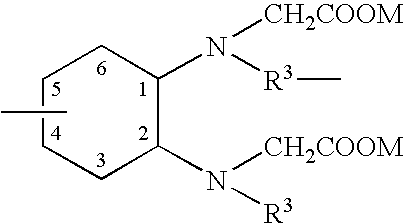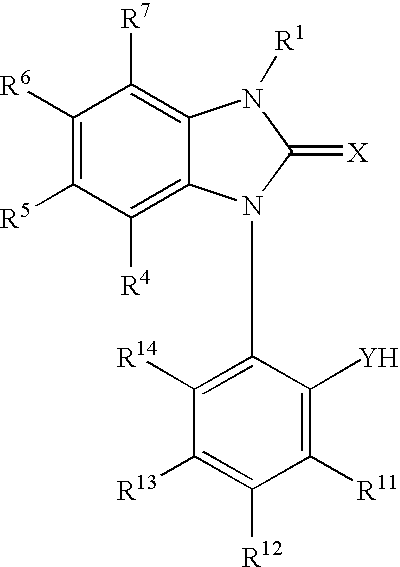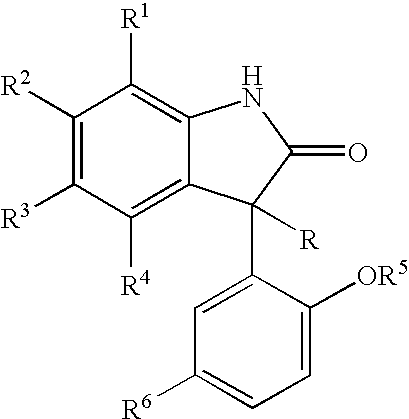Potassium channel mediated delivery of agents through the blood-brain barrier
a potassium channel and blood-brain barrier technology, applied in the direction of biocide, drug composition, cardiovascular disorder, etc., can solve the problems of incomplete blood-brain barrier, bbb obstructs the delivery of drugs and other therapeutic molecules to the brain, especially acute for patients with malignant brain tumors, etc., to prevent the breakdown of camp and increase the formation of camp
- Summary
- Abstract
- Description
- Claims
- Application Information
AI Technical Summary
Benefits of technology
Problems solved by technology
Method used
Image
Examples
example 1
In Vivo BBB / BTB Permeability.
[0688] All animal experiments were conducted in accordance with policies set by the Institutional Animal Care and Usage Committee and NIH guidelines. A rat syngeneic tumor model was prepared using female Wistar rats and a human-tumor xenograft model in athymic nude rats weighing 180-200 g were prepared for the BBB / BTB permeability studies. Although brain tumor blood vessel development is rapid in rats compared to humans, this variable should not affect the findings or conclusions because the study analyzes the response of blood vessels, regardless of how rapidly they developed, to vasomodulators. The optimum number of tumor cells and incubation period for in vivo tumor growth was determined in separate experiments. Rat glioma (RG2) cells (1×105) in 5 μl of medium with 1.2% methylcellulose were injected into the basal ganglia of Wistar rats, while nude rats were injected with glioblastoma multiforme (GBM) primary cells (5×105). The coordinates were 5-mm...
example 2
Ki Measurement.
[0689] The unilateral transfer constant, Ki (μl / g / min), which is an initial rate for blood-to-brain transfer of a radiotracer, was calculated as described by Ohno et al. (Ohno, K., Pettigrew, K. O., and Rapsport, S. T. Lower limits of cerebrovascular permeability to nanoelectrolytes in the conscious rat. Am. J. Physiol., 253: H299-H307, 1978). The Ki was determined for radiotracers, [14C]-AIB, [14C]-carboplatin, and [14C] dextran in the tumor core, tumor-adjacent brain tissue, and contralateral brain tissue using the quantitative autoradiographic (QAR) method as described earlier (Ningarsj, N. S., Rao, M., Hashizume, K., Asotra, K., and Black, K. L. Regulation of blood-brain tumor barrier permeability by calcium-activated potassium channels J. Pharmacol. Exp. Ther., 301:838-851, 2002; Ningaraj, N. S., Rao, M., and Black, K. L. Calcium-dependent potassium channels as a target protein ir. the modulation of blood-brain humor barrier. Drug News and Perspectives, 16:1-8,...
example 3
Dose Response Study.
[0690] To establish the optimal and safe dose range that would result in selective increases in BTB permeability without appreciably altering systemic blood pressure, varying doses (0-60 μg / kg / min) of MS were administered. In a separate study, Evans blue dye was administered i.v. in rats (n=4 / group) with RG2 tumors to achieve a semi-qualitative measure of BTB permeability increase.
PUM
| Property | Measurement | Unit |
|---|---|---|
| diameter | aaaaa | aaaaa |
| diameter | aaaaa | aaaaa |
| diameter | aaaaa | aaaaa |
Abstract
Description
Claims
Application Information
 Login to View More
Login to View More - R&D
- Intellectual Property
- Life Sciences
- Materials
- Tech Scout
- Unparalleled Data Quality
- Higher Quality Content
- 60% Fewer Hallucinations
Browse by: Latest US Patents, China's latest patents, Technical Efficacy Thesaurus, Application Domain, Technology Topic, Popular Technical Reports.
© 2025 PatSnap. All rights reserved.Legal|Privacy policy|Modern Slavery Act Transparency Statement|Sitemap|About US| Contact US: help@patsnap.com



